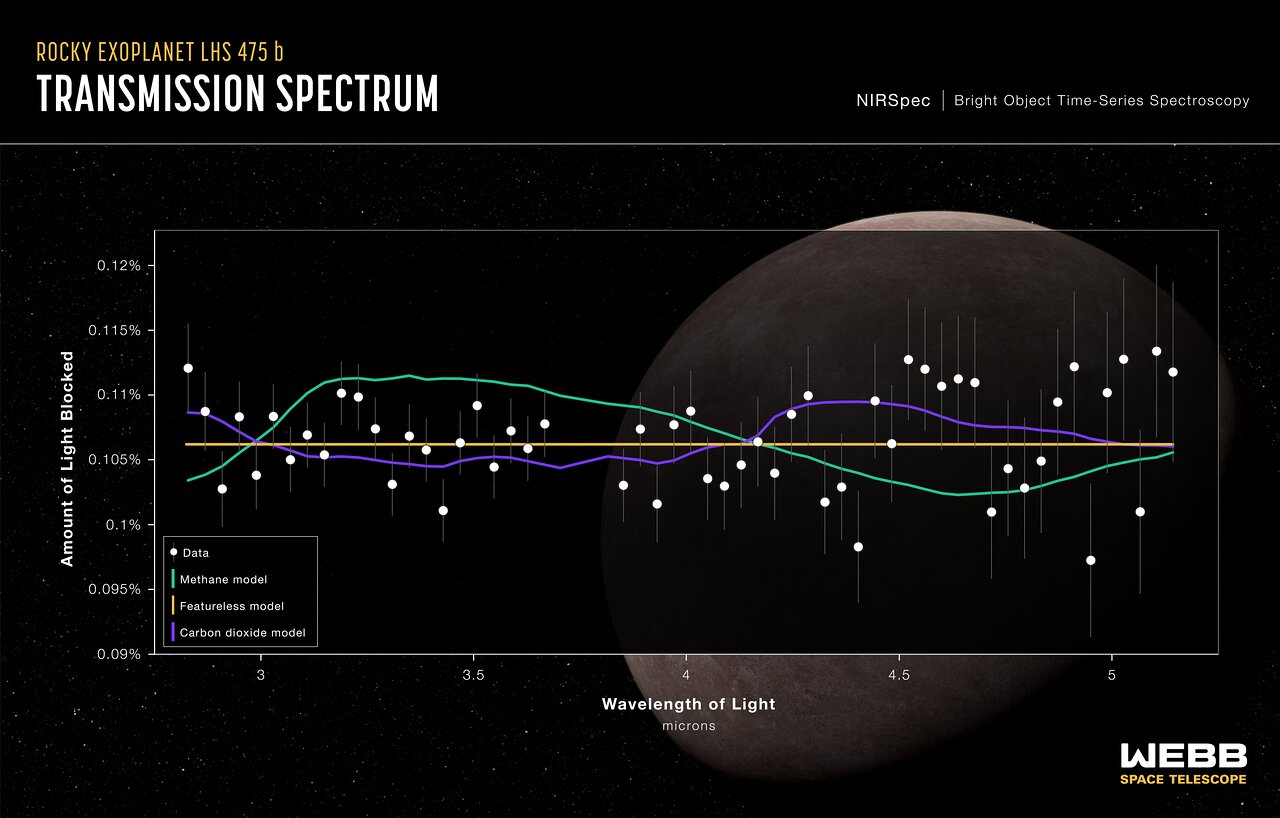NASA GSFC | STScI Webb | ESA Webb | ESA Space Science | 2023 Jan 11
Researchers have confirmed the presence of an exoplanet, a planet that orbits another star, using the NASA/ESA/CSA James Webb Space Telescope for the first time. Formally classified as LHS 475 b, the planet is almost exactly the same size as our own, clocking in at 99% of Earth’s diameter. ...Credit: NASA, ESA, CSA, L. Hustak (STScI), G. Fu (JHU), S. Moran (Arizona),
and K. Stevenson, J. Lustig-Yaeger, and E. May (JHU APL)
The team chose to observe this target with Webb after carefully reviewing data from NASA’s Transiting Exoplanet Survey Satellite (TESS) which hinted at the planet’s existence. Webb’s Near-Infrared Spectrograph (NIRSpec) captured the planet easily and clearly with only two transit observations. ...
Among all operating telescopes, only Webb is capable of characterising the atmospheres of Earth-sized exoplanets. The team attempted to assess what is in the planet’s atmosphere by analysing its transmission spectrum. Although the data show that this is an Earth-sized terrestrial planet, they do not yet know if it has an atmosphere. ...
The team also notes that while it’s possible the planet has no atmosphere, there are some atmospheric compositions that have not been ruled out, such as a pure carbon dioxide atmosphere. ... Even more precise measurements are required for the team to distinguish a pure carbon dioxide atmosphere from no atmosphere at all. The researchers are scheduled to obtain additional spectra with further observations this summer.
Webb also revealed that the planet is a few hundred degrees warmer than Earth, so if clouds are detected it may lead the researchers to conclude that the planet is more like Venus, which has a carbon dioxide atmosphere and is perpetually shrouded in thick cloud. ...
The researchers also confirmed that the planet completes an orbit in just two days, information that was almost instantaneously revealed by Webb’s precise light curve. Although LHS 475 b is closer to its star than any planet in the Solar System, its red dwarf star is less than half the temperature of the Sun, so the researchers project it still could support an atmosphere. ...
LHS 475 b is relatively close, at only 41 light-years away, in the constellation Octans.

